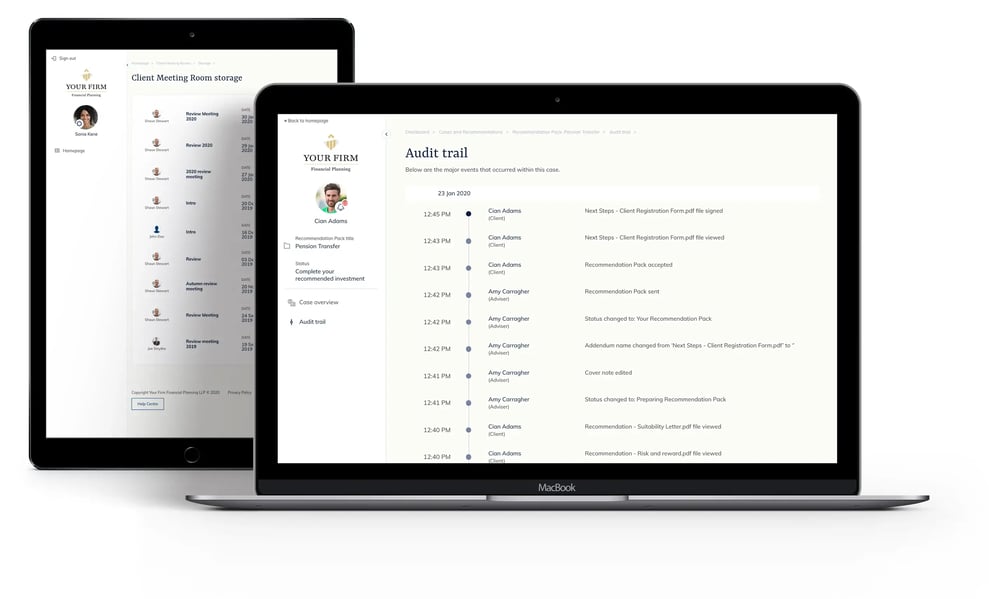

Cybersecurity Audits & Penetration Tests Services
Protect and improve your infrastructure with customized security assessments
Verify security levels with cybersecurity testing
Identify missing security elements in products and IT systems with crucial cybersecurity services, and compare against best practice requirements.
Minimize risk by upgrading analyzed infrastructure with custom solutions.
Pinpoint potential security breaches and weaknesses
Enhance security and help implement technical requirements based on expert recommendations
-
Reduced risk of data breach. Identify and harden weak spots by fixing vulnerabilities and misconfigurations
-
Best practices & regulations compliance. Meet OWASP, GDPR, HIPAA and other standards with regular security tests
-
Increased customer trust. Build and strengthen relationships by identifying threats and protecting client data and privacy
-
Highest quality of services. Protect assets and business value with unparalleled cybersecurity assessments
Developing a secure banking app and introducing process automation
By designing a modern banking platform for one of the largest UK banks, we increased efficiency and retention.
Our comprehensive solution went beyond the initial scope, fully and securely digitizing the lending process and enhancing the user experience

-
Netguru’s security expertise has been crucial to allow us to design, build and test a secure, bespoke platform. Netguru’s team of cybersecurity experts conducts thorough analyses that help us to identify potential threats and determine the best ways to further enhance platform security. The Netguru team also liaises with 3rd-party security services when independent security audits are required. Thanks to Netguru’s expertise we continue to secure our platform, and our services to our clients.

Eoin O'Gorman
Co-founder at Digital Wealth Solutions
Highlight security threats and implement improvements
Provide evidence-based and bespoke solutions to meet individual business requirements
-
Penetration tests (pentests). Measure security via controlled simulations to discover potential breaches and vulnerabilities
-
Cloud security assessment. Identify and analyze missing controls at config and infrastructure level, such as servers and network devices
-
Incident response and forensic analysis. Help clients solve IT issues & conduct intrusion analysis to establish root causes & solutions
-
Vulnerability Management. Analyze and identify vulnerabilities in your system, determine dai severity and build actionable plan to mitigate them
How does a penetration test work?
Pentests assess digital assets such as web apps and cloud infrastructure in a controlled environment.
They look for cybersecurity vulnerabilities that may lead to security breaches, and offer evidence of weak spots that need tightening.
-
Information gathering. Security Engineers collect data from public sources to mimic the process of a hacker, and the client supplies general info about scope targets.
-
Reconnaissance. Investigating a target – passively and actively – and gathering as much data as possible to use during the vulnerability assessment and exploitation phases. Via enumeration, there’s interaction with client infrastructure to establish entry points and identify technologies used.
-
Modeling. Using a consistent approach to assess for threat capabilities – assets and attacker – specific to the client in question
-
Vulnerability assessment. Scan for flaws by matching system components to public exploit databases, exposing attack and exploitation spots
-
Exploitation. Attack and exploit vulnerabilities observed in the previous phase to gain proof the client system is at risk, and where
-
Final analysis & reporting. Generate and submit a list of detected and exploited vulnerabilities to the client, including business risks, exposed vulnerabilities, and solutions
What is cybersecurity testing and auditing and why is it important?
Contents
Cybersecurity audits and security testing are services that analyze the security of an organization’s IT system and infrastructure. Cybersecurity services include pentests, audits, configuration security assessments, incident response and forensic analysis, Open Source Intelligence (OSINT), and red teaming.
The type of services undertaken depends on what the client wants and the depth of investigation they’re looking for.
Audits and tests are important (and mandatory in some cases) because they verify security levels, assist with risk management, and highlight issues and breach areas that hackers may exploit via cyberattacks, which are continually evolving.
They also ensure businesses adhere to minimum standards and regulations set by the government as well as best practices, including GDPR HIPAA, PCI-DSS, ISO 2700x, and OWASP.
Once identified, it’s possible to minimize risk by addressing deficiencies. At Netguru, each type of testing ends with a cybersecurity audit report, including a list of recommendations and improvements to improve security levels.
Cyber auditing and testing are important for all industries, but especially high-risk and high-regulated sectors like fintech, retail, healthcare, all of which store sensitive data in large volumes, making them more attractive to cybercriminals. These companies require complex solutions designed by subject matter experts and specialist cyber audit teams.
Best practices for cybersecurity auditing and testing
When testing and auditing cybersecurity, our cybersecurity auditors and security engineers adhere to best practices, including:
- Understanding business context and client expectations – scope phase
- Gaining awareness of relevant compliance standards
- Selecting proper points of reference – security standards and recommendations like OWASP, NIST, CIS, PCI-DSS, etc.
- Reviewing and verifying the architecture and specification of the analyzed system
- Verifying the state of the system based on reference points
- Clear and thorough reporting with recommendations and improvements
- Presenting the report and findings with consultation regarding the best way to approach recommendations and improvements
Internally, when organizations create a cybersecurity strategy, they should:
- Raise awareness through training, knowledge sharing, and threat modeling
- Know their IT and data systems comprehensively
- Tailor strategies to individual companies needs
- Proactively evaluate risks – test and retest
- Don’t leave security as an afterthought – design systems with cybersecurity in mind
- Consider the entire product lifecycle and security at each stage
- Periodically evaluate and update security measures, ensuring continuity
Cybersecurity audit vs. pentesting
Auditing in cybersecurity involves verificating the condition of an IT system compared to a reference point such as a checklist or security standard requirements.
Pentest services measure security levels by using a controlled simulation of a hacker attack to establish potential vulnerabilities. Exploiting these flaws provides evidence of weak spots that need to be fixed.
There are several varieties of penetration test services that battle-test against real-world threats, including application penetration testing services, API or service testing, infrastructure testing, and network penetration testing services.
A security assessment is a general analysis of infrastructure configuration, identifying missing controls and ways to harden problem areas.
Configuration elements include cloud infrastructure, web app security reviews, environment configuration, virtual and physical systems, servers, workstations, containers such as dockers, network devices (firewalls, switches, load balancers, WAFs), and CI/CD pipelines.
How testing security of your digital products helps your business?
In this digital age with enterprises moving online, cybersecurity is more important than ever.
By carrying out audits and tests, not only do business risks reduce, business value is protected (as well as customer data).
Also, the quality of products and services improves, there’s compliance with regulations, and best practices are met.
Protecting your digital products is valuable for both your business and customers, who are increasingly security savvy. By preventing security breaches, you show consumers you care about securing their data.
Verify security with experienced engineers & pentesters
Our expert team understands the importance of cybersecurity, particularly in fintech, retail, & health. With a vast experience, we’re here to meet your security needs.
DWS: Empowering financial advice firms with digitized yet personalized solutions
We helped trailblazing Digital Wealth Solutions (DWS) implement efficient and secure client-facing technology, complementing financial advisers’ traditional face-to-face consultations.
Focusing on safety, compliance, and usability, we designed a customizable ‘digital front office’ solution for financial advice firms to use with clients. We also delivered an enterprise-quality, interactive, and reliable platform, with security prioritized at every stage.

Ensuring security and control for a fintech app transferring money across borders
Fintech is a sector we focus on for devising inventive – and secure – tech solutions. The innovative app we helped design for a fintech startup allows US-based users to support family members overseas via on-demand remittances directly to the recipient’s credit card.
Executed securely via cashless transfers, we saved users time and money. Furthermore, our expertise proved invaluable in terms of the client obtaining the required regulatory approvals.

Bank of Ideas: Creating a customer platform for Santander Bank Polska (formerly BZ WBK)
From concept to solution, we built a community-powered space for our client – Santander Bank Polska. Coined the ‘Bank of Ideas’, the initiative was the first of its kind in the Polish banking industry.
We developed and deployed a secure crowdsourcing platform for users to submit issues and insights, allowing the bank to continuously improve.

See how our support helped those companies
-
"Netguru is our key partner in processing and securing sensitive medical data. Their professional approach and experience have supported us through many of the challenges we have faced. We look forward to future endeavors with proven confidence that Netguru will continue to deliver state-of-the-art solutions."

Sebastian Boëthius
Director of Technology -
"In our most recent project Netguru supported us in DevSecOps area. They helped us improve our software development processes through automation and hardening. Thanks to this support, we were able to improve part of our internal processes and ensure greater security of our services already at the production stage."

Brendon McLean
Chief Technology Officer -
"Working with the Netguru team was an amazing experience. They have been very responsive and flexible. We definitely increased the pace of development. We’re now releasing many more features than we used to before we started the cooperation with Netguru."
.jpg?width=65&height=65&name=Marco%20Deseri%20Artemest-s(1).jpg)
Marco Deseri
Chief Digital Officer
15+
Years on the market400+
People on Board2500+
Projects Delivered73
Our Current NPS Score
Delivered by Netguru
$47M
Granted in funding. Lead generation tool that helps travelers to make bookings$20M
Granted in funding. Data-driven SME lending platform provider$28M
Granted in funding. Investment platform that enable to invest in private equity funds$5M
Granted in funding. Self-care mobile app that lets users practice gratitude
Common questions about cybersecurity audits and pentests
Read more on our Blog
For more info on cybersecurity, head to our expert knowledge base
Our work was featured on
Start your project with us or take existing one to next level
Share your challenge and our team will support you on a journey to deliver a revolutionary digital product


Need additional services?
-
Customized software solutions. Bring your brand to life with tailored app development and internal process automation
-
Cloud-based apps and software. Enhance productivity, reduce costs, and rapidly deploy with cloud development


